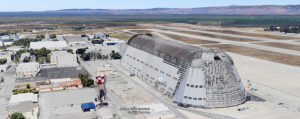The Google Company signed a 60 year, 1.16 billion dollar lease to renovate three large hangars at a NASA airfield outside of San Francisco, to create a facility for research and development of robotics, aviation and space exploration. In a press release, NASA announced that “Planetary Ventures LLC, a shell organization operated by Google for real estate deals, will contribute $1.16 billion over the course of the lease, while reducing the government agency’s maintenance and operation costs by $6.3 million annually” (Lawler, 2014). Since 2013 Google acquired many companies that specialize in the production of robot, robotic technologies and other parts. Some of these companies include Japan-based, Schaft Inc. which makes humanoid robots; US-based, Industrial Perception makes robot arms and robot vision or the Titan Aerospace in the US produces solar-powered drones. The reason why Google decided to make this investment in these facilities is due to the increased demand for industrial robots. This is a new market that is rising. Google took advantage of this, and decided to lease this site that provide Google an ability of greater production of industrial robots. The use of industrial robots that are connected to a control system enables companies to use apps to personalize the robots to perform specific tasks. In 2013 about 179,000 industrial robots were sold. Out of those 100,000 alone went to the Asian market. The largest current market for these robots is China.
The reason that there is a higher demand has to do with capacity. We talked specifically in class about capacity and determining capacity requirements. In this scenario, “a combination of rising wages and the need for new production capacity that can manufacture products to global standards is driving this demand” ( Banker, 2014). Google is an example of engaging in strategic capacity planning. They are matching capacity with the anticipated demand requirements which is the increasing demand of industrial robots in the global market. They probably asked themselves what kind of capacity they need and how much they need, which led them to decide to expand their headquarters. Google understands the technology and capacity increments. They understand the opportunity they have for change to dominate this new developing market. Therefore Google is targeting the Chinese market for industrial robots since they see the highest opportunities there. Google has already made plans to cooperate with Chinese contract electronics manufacturer Foxconn, who want to purchase 10,000 robots. Google is taking the right steps and engaging in long range planning, by addressing the needs of a new production capacity.
Do you think Google is doing a good job matching capacity with demand requirements? Do you agree with Google’s decisions to take over the operations at these facilities? Do you think robotics is in our near future?
Sources:
Banker, Steve. “Google’s Robot Strategy.” Logistics Viewpoints Logistics Supply Chain and 3PL Executives RSS. N.p., 11 Nov. 2014. Web. 11 Nov. 2014. <http://logisticsviewpoints.com/2014/11/11/googles-robot-strategy/>
Gibbs, Samuel. “Google Leases Nasa Airbase for Robots, Planes and Space Exploration.” The Guardian. Guardian, 11 Nov. 2014. Web. 11 Nov. 2014. <http%3A%2F%2Fwww.theguardian.com%2Ftechnology%2F2014%2Fnov%2F11%2Fgoogle-nasa-airbase-hangers-robots-planes-space-exploration>.
Lawler, Ryan. “Google Takes Over Operations Of Moffett Airfield From NASA, Will Invest $200M Into The Site.” TechCrunch. N.p., 10 Nov. 2014. Web. 11 Nov. 2014.< http://techcrunch.com/2014/11/10/google-moffett-airfield-nasa/>
